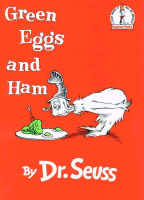httpv://www.youtube.com/watch?v=UnrYBq0SONI
Graham Greene is a writer whose celebrity has waned somewhat since the 1970s, when he was among the best-known and most widely read of literary figures. In terms of the modern literature syllabus at most universities, if my anecdotal impressions are at all representative, he has been squeezed out, like some other British writers of the mid-century (remember William Golding and Iris Murdoch?) by the new generation of postmodern and postcolonial writers. The Modernists of the early twentieth century are still going strong, and someone had to make room for Salman Rushdie, Jeanette Winterson, Ian McEwan, and Zadie Smith. On the other hand, people must still be reading Greene, as my local Chapters usually has a good selection of his novels for sale.
Greene was one of the first serious writers I read, since he was at the height of his fame during my high school and undergraduate years. Moreover my father had a large collection of Greene’s work, including some first editions from his middle period. Since I am working on a paper on Greene, I have naturally thought about him in relation to Northrop Frye. A little bit of checking turned up the fact that the two men died within a few months of each other in 1991. Greene was born in 1904, making him eight years older than Frye. He established himself as a writer fairly early on, but the book that consolidated his literary reputation as the most prominent British novelist of his time was The Heart of the Matter (1948), a dark story of wartime espionage and sexual rivalry that appeared the year after Fearful Symmetry.
Northrop Frye does not say a great deal about Graham Greene, whose major works are in the mode of ironic realism, and who shares the vision of extremity of the Modernists but without the overt mythic elements that attracted Frye. The discussion of ironic comedy in the first essay of the Anatomy refers to “the kind of intellectualized parody of melodramatic formulas represented by, for instance, the novels of Graham Greene.” Frye did allude a number of times to The Ministry of Fear (1943), one of Greene’s strangest works, which has been termed dangerously close to self-parody. It contains a number of romance elements, and it is mentioned in Words with Power and several times in the Notebooks, where Frye remarks on its use of “Amnesia & variants of the twin theme, no less” (Notebook 11e [51]; CW 13:329). He was impressed by the classic film noir, The Third Man (1949), starring Orson Welles, for which Greene wrote the screenplay, and he recorded his impressions of the film in his diary on 26 April 1950. (The unforgettable closing scene is featured above.)
There is a very good book on Greene’s later fiction by Brian Thomas (An Underground Fate: The Idiom of Romance in the Later Novels of Graham Greene, 1988) that makes extensive use of Frye’s work, and especially of The Sacred Scripture. Greene’s imagination was shaped by his childhood reading of the imperial romances of the late Victorian period and early twentieth century, as a result of which Joseph Conrad became a literary influence who caused Greene much anxiety: several of his works are essentially rewritings of Heart of Darkness, and he suppressed his second and third novels, The Name of Action (1930) and Rumour at Nightfall (1932), tales of adventure that read like imitations of Conrad’s weakest fiction. Thomas demonstrates a return to romance, though of a different kind, in Greene’s later novels, some of which bewildered their first readers and proved difficult for critics to assimilate to their pre-existing view of the writer.
He begins with Greene’s works of the 1950s, which include The Quiet American, a novel about Vietnam at the point where American involvement was in its earliest stages, and the war was still a French colonial war. The Quiet American (1955) contains elements of a detective novel, of travel writing, and of straightforward journalistic reporting. It can be read as a novel about sexual jealousy, or as a political novel, or both, and it was very controversial in the United States on first publication, since it expresses Greene’s deep anti-Americanism. A. J. Liebling’s negative review in The New Yorker expressed the resentment many Americans felt when The Quiet American was published, though it also inspired war journalists like David Halberstam. (See here for a discussion of the recent film of The Quiet American that points to some ambivalences in the novel’s portrayal of America and Americans.) None of the standard readings that precede Thomas’s book seems to capture the reason for The Quiet American’s profound appeal: I have read it many times, and have encountered quite a few other people for whom it is likewise a favourite book. Brian Thomas’s examination of the romance archetypes in The Quiet American provides a convincing explanation of how Greene has combined the disparate elements I have mentioned into one of the best English novels of the twentieth century, and his book is also a demonstration of how Frye’s theory of romance illuminates a writer for whom Frye himself did not have a particular affinity.
Thomas sees Greene’s later protagonists as characters who tend to be “escapists” (one of Greene’s volumes of autobiography is entitled Ways of Escape, in which he memorably describes writing as a “form of therapy”), “not merely because they are irresponsible romantics but because they need to recover a sense of identity that has somehow been lost. . . . Escape increasingly becomes a distinctively fictive business, a heroic literary pilgrimage into the archetypal underground territory of the imagination itself. And despite all Greene’s protestations that he represents the world as it ‘is,’ this territory is the real Greeneland.”
